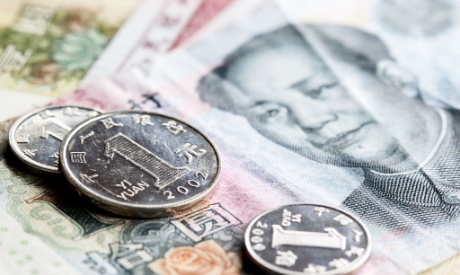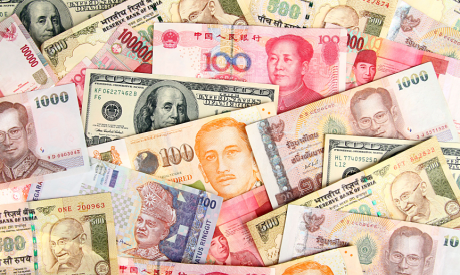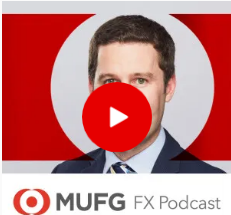China cuts its 7-day reverse repo rate and more to come
Event: On 13th June, “to maintain reasonably sufficient liquidity in the banking system”, PBOC carried out a RMB2bn 7-day reverse repurchase operation through interest rate bidding. The winning bid rate for 7-day repo is 1.9%, 10bps lower than prior level.
Key views: This may be the start of further monetary easing, and we see 10-20bps more cut on various policy rates, if central government will not implement large-scale fiscal stimulus including increasing the issuance of special government bonds. Although we have been long arguing for further fiscal stimulus, recent lower deposit rates give room for policy rate cut, and both nominal and real lending rates appear elevated compared with weak growths of nominal GDP and disposable income. CNY likely remains under pressure due to worsened yield spread, but will eventually benefit from the gradually induced positive sentiment by the easing policies, we still expect USD/CNY to decline to 6.7 by the year-end.
Comments:
- The aim of this policy cut by PBOC is to stabilize expectation and continue to lead an easing policy stance.
In fact, since this March, intra-bank liquidity conditions have been ample, with over-night and 7-day money market reverse repo rates staying at levels below 1.8% for the most time of May, which was more than 20bps lower than PBOC’s open market operations 7-day reverse repo rate (before the cut). These imply that today’s 10bps cut of 7-day reverse repo rate will probably not have a lasting and significant negative impact on money market interest rates, but the action today probably sends out a signal that PBOC intends to adopt a loose monetary stance in the short term, in order to stabilize confidence and expectations. The expectation of such will likely to pressure the whole interest rate yield curve lower.
- PBOC’s action today is much waited by the market players, and it suggests potential cuts on Medium-term Lending Facility rate on June 15th and LPRs on 20th
In the past two months, the pace of economic recovery slowed, market participants increasingly expected for further policy easing. The worse-than-expected April data of China key economic indicators was released in Mid-May, followed by below-50 May manufacturing PMI and lower May services PMI, worse-than-expected -7.5%yoy exports growth in May, and other disappointing high-frequency data. These imply increasing pressure on China’s economic recovery. Since mid-May, the weak and weaker sentiment drove CSI 300 Index to drop by 5% and RMB to depreciate by more than 3% against the US dollar to 7.16. It became a consensus lately that government shall act to stabilize economic activity and expectation.
Recent CPI inflations of being 0.2%yoy in May and 0.1%yoy in April also alerted the government the imminent need of policy easing to boost domestic consumption. Today’s policy rate cut appears a follow-up on PBOC governor Yi Gang’s recent talk on 9th June. During a field trip in Shanghai, governor Yi said that the central bank will enhance counter-cyclical adjustments, use multiple monetary policy tools to maintain reasonably ample liquidity and appropriate credit supply, and also lower the borrowing costs of market entities while maintaining stability.
- Recent commercial banks’ cut on deposit rates gave room for potential lending rate cut
Commercial banks’ NIM saw a sharp decline lately, with the overall NIM being at 1.74%. China’s major state-owned banks including Industrial and Commercial Bank of China, Agricultural Bank of China, Bank of China, China Construction Bank, Bank of Communications and Postal Savings Bank of China announced on 8th June that they have lowered yuan demand deposit rate for a second time since last September, to 0.2% from 0.25%, effective on the same day, and also cut 2-, 3- and 5-year time deposit rates to 2.05%, 2.45% and 2.5% respectively, from 2.15%, 2.6% and 2.65%. Lower deposit rates are believed to ease margin pressure on banks and inject liquidity into the real economy. Considering the current levels of deposit rates and tight NIM of banking sector, we see additional 10-20bps further policy rate cut, which will subsequently induce even large size of decline in lending rates, suggested by historical performances.
- If monetary easing is to take the central stage in next round of counter-cyclical adjustments, then more rate cut is needed... Compared with nominal GDP growth and residents' income growth, current loan interest rates are not low enough. Normally, nominal GDP growth is higher than the normally lending rate, meaning that the economy is growing faster than the debt and the ability to repay the debt improves. That said, the nominal lending rate has been close to nominal growth rate since the second half of last year, with nominal GDP growth being 4.97%yoy in 1Q23 and nominal lending rate (over 5 years) being 4.9%yoy at the end of March 2023. In addition, the gap between the growth rate of disposable income of urban residents and the interest rate of stock mortgages also at historically low levels.
Real lending rates increased in recent month rather than declined. And current real lending rate (over 5 years) is higher than the level during the economic downturn in 2015. Since the outbreak of the Covid-19 pandemic, China has lowered policy interest rates (7-day reverse repo rate) three times, with a cumulative reduction of 50bps. However, the real lending rate (5 years) has not been lowered, measured by the weighted average interest rate of RMB loans of financial institutions minus the year-on-year growth rate of CPI. At the end of first quarter of 2023, China's real lending rate was 4.2%, which was only 40bps lower than pre-pandemic level, and it even went up to 4.7% by the end of May. No material decline in real lending rate will not help restore the saving and investment gap, when there is no sufficient fiscal stimulus to boost the sentiment. Also, the growth rate of urban disposable income per capita declined to levels close to real lending rates as well.
Some parts of economy actually have been facing rising cost of funding, due to rising risk premium in an economic downturn. Since the beginning of this year, although bank credit has accelerated lending and lending rates have remained low, Wenzhou private borrowing rates, representing financing costs for small and micro enterprises, actually increased noticeably.
We have argued before and still maintain the view that fiscal stimulation may be a better choice, and continue to expect certain level of fiscal stimulus.
- Implication on CNY: stress in near-term, positive in medium-term
Considering aggressive monetary easing may pressure down China’s interest rate yield curve, and widen China’s negative interest rate yield spread with US, which will in turn pressure on CNY against the US dollar in the near term and release some pressure on exports. But, for the medium-term, we still expect a stronger CNY against the US dollar by the end of this year, due to improved sentiment induced by the policy stimulus, improving economic recovery and stronger relative GDP growth relative to the situation of potential mild recession in Unites States, as well as a weaker US dollar in the medium term.



